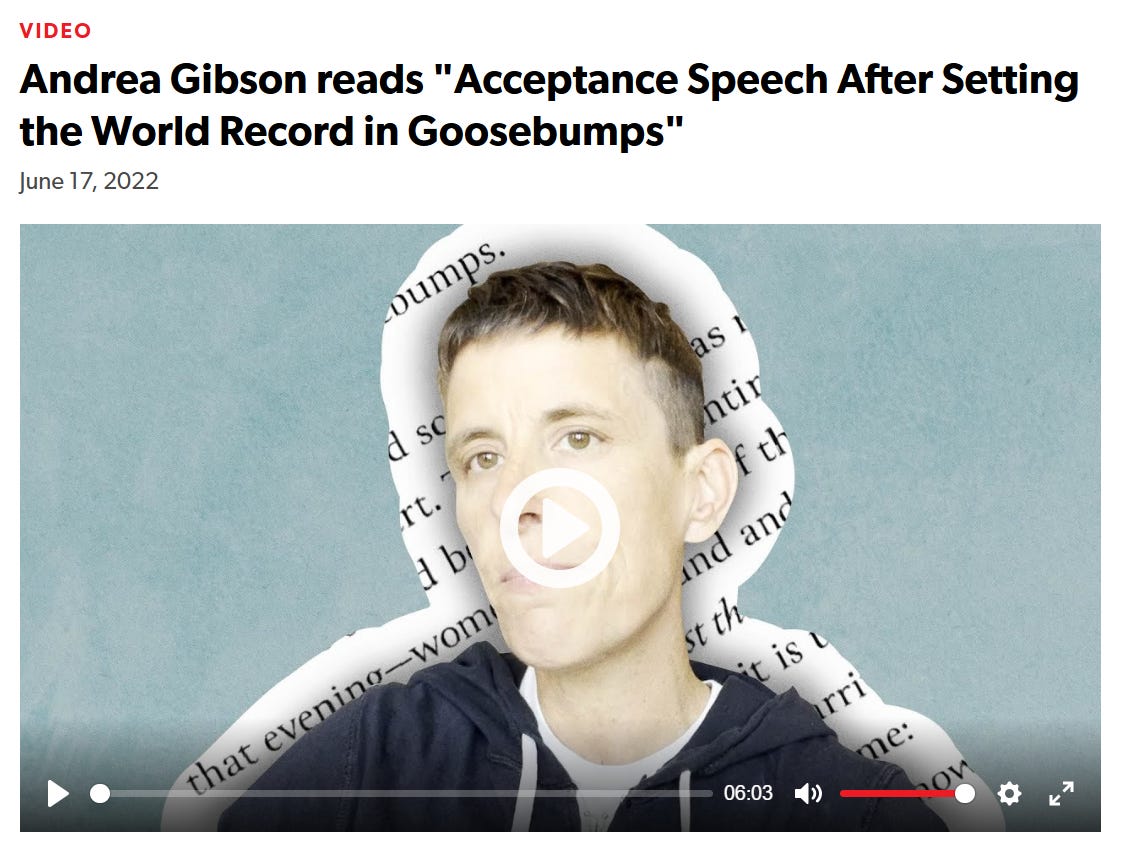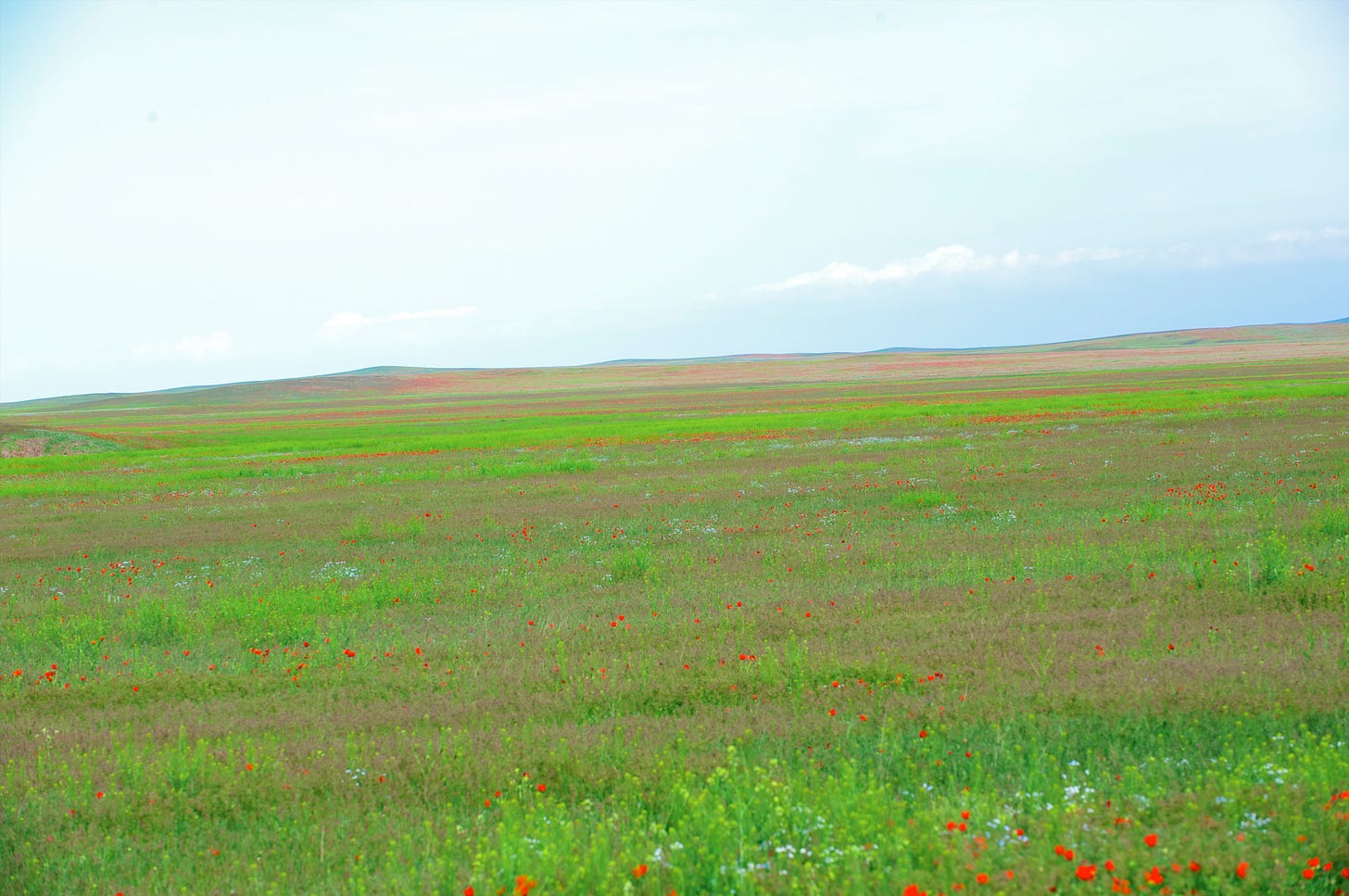A simple mantra for connecting to each moment
How one simple practice bridges psychological science and spiritual wisdom
Beyond Words: A Mantra for Psychological and Spiritual Freedom
I'm writing this while noticing the urge to get up from my chair and grab a snack. This moment contains a push to move away from the struggles of writing, and a pull to create something meaningful for you. And there's a useful mantra that's helping me hold this moment with both discipline and self-compassion.
This morning, we were meeting in our Experiencing ProSocial Spirituality class, and we were exploring what psychological flexibility might mean from a spiritual perspective. What emerged was a perfect example of how ancient wisdom and cutting-edge psychological science can illuminate the same profound truths about human flourishing.
The mantra I shared with the class comes from the wonderful work of Moran and Ming (2020, 2023), and it goes like this:
I am, here now, accepting the way I feel, noticing my thoughts, while doing, what I care most about.
That's it. Six simple phrases that can transform how you meet each moment of your life.
Before we dive deeper, I invite you to try something. Take a moment right now and silently repeat these words, noticing what happens in your body and mind: "I am, here now, accepting the way I feel, noticing my thoughts, while doing what I care most about." What do you notice? Hold onto that feeling as we explore why this simple practice might be more revolutionary than it appears.
Bridging Science and Spirit
This mantra bridges ancient wisdom and cutting-edge psychological science. The spiritual traditions have always known that presence, acceptance, and compassion are pathways to freedom. Now contextual behavioural science shows us exactly how these practices work—they're not just feel-good concepts, they're evidence-based tools for psychological flexibility supported by literally thousands of research studies.
If you're familiar with Acceptance and Commitment Therapy/Training (ACT), you'll recognise each element of the ACT model in this mantra. And if you know about the Extended Evolutionary Meta Model (EEMM; Ong et al, 2024), you'll also recognise each facet of our psychological experience to which we can bring attention. Here's how they connect:
Let me share four insights about this practice that I hope will be helpful:
1. One Integrated Behaviour (Not Six Separate Skills)
While there are six ACT skills represented here, we are whole people showing up to whole situations with whole behaviours. Sometimes noticing what matters most (valuing) is most salient, sometimes accepting difficult emotions (acceptance), but always there is one whole being that is behaving in context.
Right now, as I feel the pull towards that snack, I'm not doing six separate things. I'm engaging in one integrated behaviour: aware of myself as the one choosing, present to both the craving and my larger intention, accepting the restlessness without judgment, noticing thoughts like "This is too hard" or "Just a quick break," while continuing to write what I hope will serve you.
2. Bringing Love to Each Moment
After years of practising various forms of meditation, I have found the most important thing I need to remember, no matter what form of practice I engage in, is to bring kindness to myself (and therefore others) in as many moments as possible. These words are pointers to the deeper integrated behaviour of loving: oneself, others, the moment.
A Poetic Expression of This Practice
I want to pause here and share something that moved me to tears in our class today. Diane Berke and Susan Soleil introduced us to poet Andrea Gibson reading their own work, "Acceptance Speech After Setting the World Record in Goosebumps."
This poem captures the profound tenderness possible when we meet each moment, including our own struggles, with radical acceptance. Gibson's words remind us that this practice isn't about perfection or control; it's about showing up with such complete presence that even our difficulties become doorways to deeper connection.
A more beautiful expression of the power of greeting each moment with love I cannot imagine. The mantra we're exploring is, at its heart, an invitation into this same quality of tender presence.
3. Engaging Every Aspect of Our Experience
If you look again at the Moran and Ming mantra, you can see it's not just a little thing you can do from time to time. It's actually an invitation to a way of being in the world all the time. It is, in effect, a model of healthy psychology.
If you look inside every moment, you will see there are streams of self-construction (selfing), attending, emoting, thinking, planning/acting, and valuing. The Moran and Ming mantra, based as it is on literally thousands of studies of the effectiveness of ACT (not to mention all of the world's spiritual traditions), captures in a bare few words a healthy form of engagement with the world.
What if we all met as many moments as possible from this place: "I am, here now, accepting the way I feel, noticing my thoughts, while doing what I care most about"?
Now that I put it like that, you might be wondering if this is somehow selfish—why is it “what I care most about” and not “what we care most about”? My experience is that when I slow down enough to pay real attention to this moment, what I care about as a fully functioning human being (not caught in trying to protect or project from a caricature of self) must include what others care about. If we are holding this mantra in a selfish way, we don’t really get it.
4. Moving Beyond Words and Rules
Look again at the mantra: "I am, here now, accepting the way I feel, noticing my thoughts, while doing what I care most about." Let me ask you: which of these behaviours require words? Which are about conceptualising?
Once we are verbal, all our behaviours can be infused with language, but if we approach this mantra from a place of interconnectedness, lightness, and playfulness, we might just be able to let go enough to experience four of the elements:"I am, here now, accepting the way I feel... while doing", almost entirely without words.
When we look at "noticing my thoughts," we see we are manifesting an awareness that holds words as object, not subject. Instead of "I am regretful," I notice "I am having the thought that I am regretful."
And while expressing "what I most care about" necessarily involves words, the feeling of connection with what we value is beyond words. It is pure qualia (the felt experience of what something is like, the redness of red, the warmth of love) if you like. It is the thing that we experience, and no AI, no matter how sophisticated, can experience.
So the mantra is an invitation to move:
"Out beyond ideas of wrongdoing and rightdoing, there is a field. I'll meet you there. When the soul lies down in that grass, the world is too full to talk about. Ideas, language, even the phrase 'each other' doesn't make any sense." (Rumi)
This practice invites us to step out of the world of verbal rules and into what we might call direct contingencies - when our behaviour is shaped by immediate, lived experience rather than by the beliefs and assumptions we habitually bring to each moment.
I sometimes think we live in two worlds: a world of direct experience and a world of words. This mantra invites us to step out of the world of words for a moment and into the world of experience, of consciousness.
A Practice for This Moment
Please take a moment to close your eyes, bring your awareness to your body, and say these words with kindness and compassion for whatever you notice arising in this moment:
I am, here now, accepting the way I feel, noticing my thoughts, while doing what I care most about.
The urge to snack has now gone. It is a new moment, this post is complete and I am noticing I am truly hungry so it is time for lunch. Thank you for reading and I hope this post is of value to you today.
Thank you for reading this post. It is public so please feel free to share it.
If you feel moved to comment on the post, I genuinely love hearing your thoughts - indeed that is why I write.
And of course, if you enjoyed this post and would like to receive similar posts from time to time, please subscribe.
References:
Moran, D. J., & Ming, S. (2020). The Mindful Action Plan: Using the MAP to Apply Acceptance and Commitment Therapy to Productivity and Self-Compassion for Behavior Analysts. Behavior Analysis in Practice, 15(1), Article 1. https://doi.org/10.1007/s40617-020-00441-y
Moran, D. J., & Ming, S. (2023). Finding Your Why and Finding Your Way. New Harbinger.
Ong, C. W., Ciarrochi, J., Hofmann, S. G., Karekla, M., & Hayes, S. C. (2024). Through the extended evolutionary meta-model, and what ACT found there: ACT as a process-based therapy. Journal of Contextual Behavioral Science, 32, 100734. https://doi.org/10.1016/j.jcbs.2024.100734




Your mantra is perfect and seems to be coming from the tradition of the Transcendental Meditation into ACT and hopefully can enrich prosocial world while taking care of individuals and groups alike.
I am struck by noticing how many words it took to explain getting beyond words to noticing.